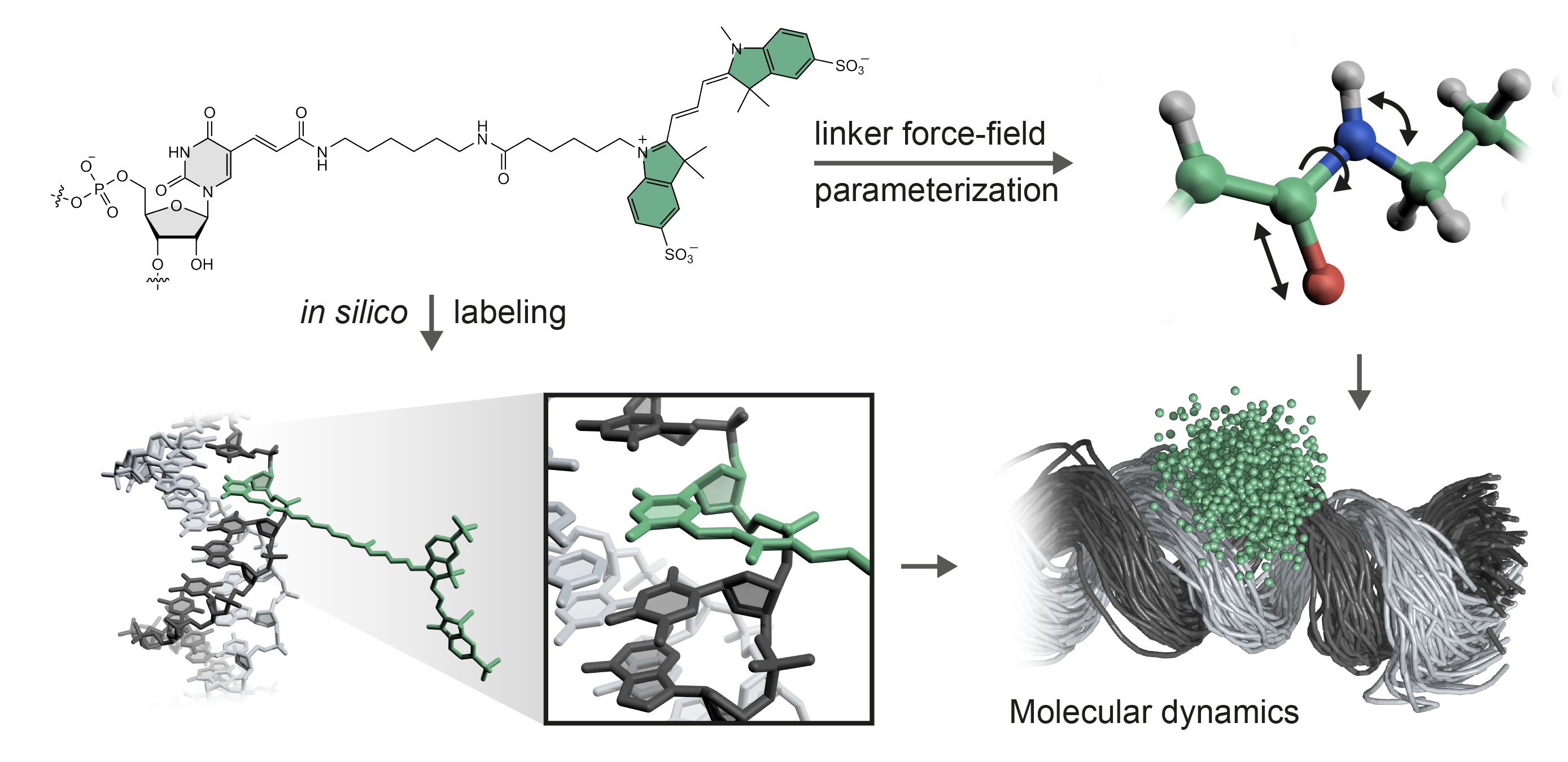FRETlabel is a PyMOL plugin to label nucleic acids with explicit fluorescent dyes. It aims to facilitate the workflow of setting up, running and evaluating molecular dynamics simulations with explicit organic fluorophores for in silico FRET calculations.
Specifically, FRETlabel includes the following features:
- PyMOL plugin for fluorescent labeling: Label your nucleic acid of interest with the click of a button. The PyMOL plugin extends the AMBERDYES package (Graen et al. JCTC 2014) geometries and force field parameters of common nucleic acid linker chemistries.
- Build new fragments interactively: Tutorials guide you step-by-step through the process of creating new base, linker and dye fragments by integrating with established pipelines for topology generation such as Antechamber and Acpype.
- FRET prediction: Calculate FRET distributions from MD simulation with all-atom organic dyes. FRETlabel integrates with FRETraj to compute photon bursts based on distance RDA(t) and orientation trajectories κ2(t) of the fluorophores.
Fig. Schematic of FRETlabel: (i) A fluorescent dye (here Cy3) is coupled to a nucleic acid via a PyMOL plugin. (ii) An existing force field (e.g. AMBERDYES) is patched with parameters for linker fragments to enable MD simulations with explicit fluorophores (dots represent the spatial distribution of the dye).
Follow the instructions for your platform here
FRETlabel attaches explicit fluorophores on a custom nucleic acid. If you instead like to use an implicit, geometrical dye model that relies on accessible-contact volumes (ACV) then have a look our sister project FRETraj (Steffen, Bioinformatics, 2021)
If you use FRETlabel in your work please refer to the following paper:
- T. Graen, M. Hoefling, H. Grubmüller, J. Chem. Theory Comput. 2014, 10, 5505-5512.
- B. Schepers, H. Gohlke, J. Chem. Phys. 2020, 152, 221103.
- R. Shaw, T. Johnston-Wood, B. Ambrose, T. D. Craggs, and J. G. Hill, J. Chem. Theory Comput., 2020, 16, 7817–7824.
- M. Zhao, F.D. Steffen R. Börner, M. Schaffer, R.K.O. Sigel, E. Freisinger, Nucleic Acids Res. 2018, 46, e13.
- F.D. Steffen, R. Börner, E. Freisinger, R.K.O. Sigel, CHIMIA 2019, 73, 257-261.
- F.D. Steffen, R.K.O. Sigel, R. Börner, Bioinformatics 2021, 37, 3953–3955.
1 PyMOL is a trademark of Schrödinger, LLC.




